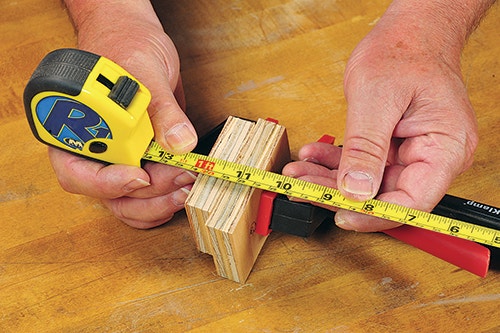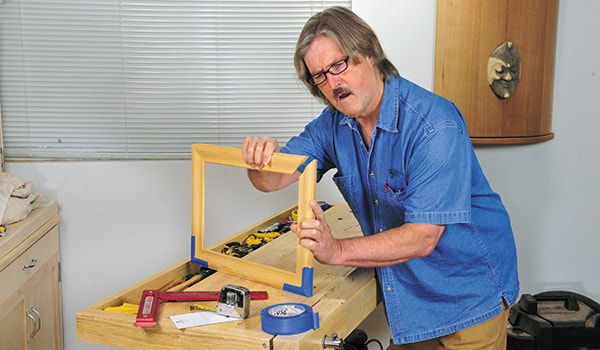Measuring Advice: Dealing with Non-Standard Size Materials
Imagine 2x4s that are actually 2" thick by 4" wide. But real-world discrepancies, like 3/4" plywood measures only 45/64" thick, can make it a real pain to work with these materials. Here's one way to deal with this issue: Say you have a box with butted plywood sides that needs to be exactly 12" wide. Instead of using math to calculate the exact length needed for the box's top and bottom, take two scrap pieces of the plywood you're using and clamp them together. Now align your tape's 12" mark with the outer edge of one scrap. The mark that aligns with the outer edge of the other plywood scrap equals the exact length you'll need to cut the box's top and bottom, 10-9⁄16" in this case.

Another strategy for dealing with non-standard sized materials is to design and build your project so that the odd dimensions of such components don't come into play. For example, in the case of the box described in the previous paragraph, if the final width doesn’t have to be exactly 12", just pretend that the plywood is actually 3/4" thick and cut the top and bottom 10-1⁄2" long. The final box may end up being just 11-29⁄32" wide, but no one will notice that it's 3/32" short.
Keep the inspiration coming!
Subscribe to our newsletter for more woodworking tips and tricks
